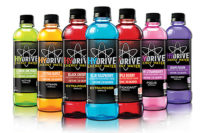![]()
Why Can’t I find the Right People?
By Ned Bauhof
Targeted workforce location and recruiting
I continue to be
amazed by how companies that rely so heavily on human labor for success
place so little emphasis on finding the right people to achieve success.
Newspaper ads followed by a drug test followed by a “go do what he
does” training program is a recipe for disaster. Even as the economy
has suffered and unemployment is up vs. the record lows in the 1990s,
finding and keeping top-notch warehouse employees is more difficult than
ever before.
The continuous struggle facing warehouse leadership to
find and keep quality people in warehouse and distribution roles is
absolutely exhausting to witness. First of all, the chances of the right
number of people with the right qualities and capabilities coming to you
are slim to none. Typically, those responding to newspaper ads are
unemployed, and often for good reason. You should not be targeting the
unemployed. Instead of waiting for the right person to walk in off the
street, target and recruit quality resources that possess the skills you
want and need.
Targeted Workforce Location and Recruiting (TWLR) is a
technique that other industries have used widely with tremendous success.
If ever there has been a right time for a more sophisticated approach to
upgrading the human element, this is it. Product proliferation, increasing
customer demands and limited warehouse space have increased the demands on
the industry’s labor force. Simply put, the work is harder and will
continue to get harder. Addressing this with unqualified, inexperienced
resources who offer low dependability, questionable capability and a high
likelihood for turnover is most likely not
the best solution.
Labor Risk
As with many industries, labor is the largest component of productivity
and cost in beverage warehousing. Organizations seeking to locate a new facility,
expand their current location or just continue day-to-day operations in an existing
location are subject to labor risk. The more dependent an organization is on
conventional warehouse techniques, the greater the risk. In beverage warehousing,
the dependency on conventional techniques is great; therefore the risk is equally
great.
Labor risk is comprised of three elements:
1. Availability of volume by occupations matched to job requirements to allow for initial start-up, growth and turnover.
2. Availability of worker quality (“aptitude” and “attitude”) providing the ability to achieve performance goals.
3. Wage levels, as they exist today and as affected by changes in supply and demand going forward into the foreseeable future.
1. Availability of volume by occupations matched to job requirements to allow for initial start-up, growth and turnover.
2. Availability of worker quality (“aptitude” and “attitude”) providing the ability to achieve performance goals.
3. Wage levels, as they exist today and as affected by changes in supply and demand going forward into the foreseeable future.
Why TWLR?
TWLR significantly increases your chances for operational success
and improvement to the bottom line… period.
Think for a moment of the ongoing cost of recruiting that you experience and the lost productivity associated with constant turnover as well as the lost time on the part of leadership to manage a rotating door of employees. Did you know that excessive turnover can cost you between 100 and 200 percent of a worker’s annual wages, not to mention the “headache factor” associated with it?
Think for a moment of the ongoing cost of recruiting that you experience and the lost productivity associated with constant turnover as well as the lost time on the part of leadership to manage a rotating door of employees. Did you know that excessive turnover can cost you between 100 and 200 percent of a worker’s annual wages, not to mention the “headache factor” associated with it?
If the job requirements, wages and benefits you offer are a
good match for a worker’s skills, aspirations and household budget, then a win-win
situation exists. For the employee, it means quality of life. For the company,
it means an average reduction of 50 to 90 percent on recruiting costs, reduced
turnover, and an increased probability for productivity, all of which translate
into net economic benefits and a higher return on human capital investment.
How does it work?
In this information age, the amount of data readily
available about each one of us is mind boggling. The places we shop, the
items we buy, the amount we spend… this information is used to create
advanced marketing databases that companies use to target prospective users
of their goods or services. These same marketing database tools, which are
broken down into 62 geo-demographic segments, can be used to create
one-to-one communications with households and individuals that have the
highest propensity of interest in what you as an employer have to offer.
Within the entire labor market where you are located
or where you may plan to locate, only a remarkably small percentage of
households are going to be a good match for the job requirements, wages and
benefits you offer. This is why the likelihood of this small percentage of
people finding you is slim and why it’s necessary to have a more
sophisticated approach. You can now target your workforce as well with
professional guidance and expert systems.
Human resource policies
As you provide this article to your local human
resource manager, he or she will ponder one or both of the following
questions. Does TWLR take the place of my human resource practices and
policies? Is TWLR consistent with the company’s goals for equal
employment opportunities?
Although the approach is nontraditional, when done
correctly, TWLR will enhance your Human Resource Department’s chances
for success in all that they do. By targeting economic traits that are
consistent with your commonly shared success, you actually maintain a
higher likelihood of achieving equal opportunity employment goals.
Case study
A major corporation planned to open two new facilities
and was in need of 100-plus non-managerial employees. It performed an
analysis of existing company employees and cross-referenced against the job
functions required in the two new facilities. Employees would travel no
farther than 12 miles to maintain their employment at the current wage
rate, according to the results of this analysis. The company created a
household target listing by using geo-demographic marketing information
along with current employee profile information. It mailed the employment
information to each household matching the criteria within a 12-mile
radius. The company invested $11,000 in this project, which equated to
$91.66 per employee hired. This approach was so successful that the company had to cease other advertising campaigns after three
weeks due to the overwhelming response of
qualified candidates.





